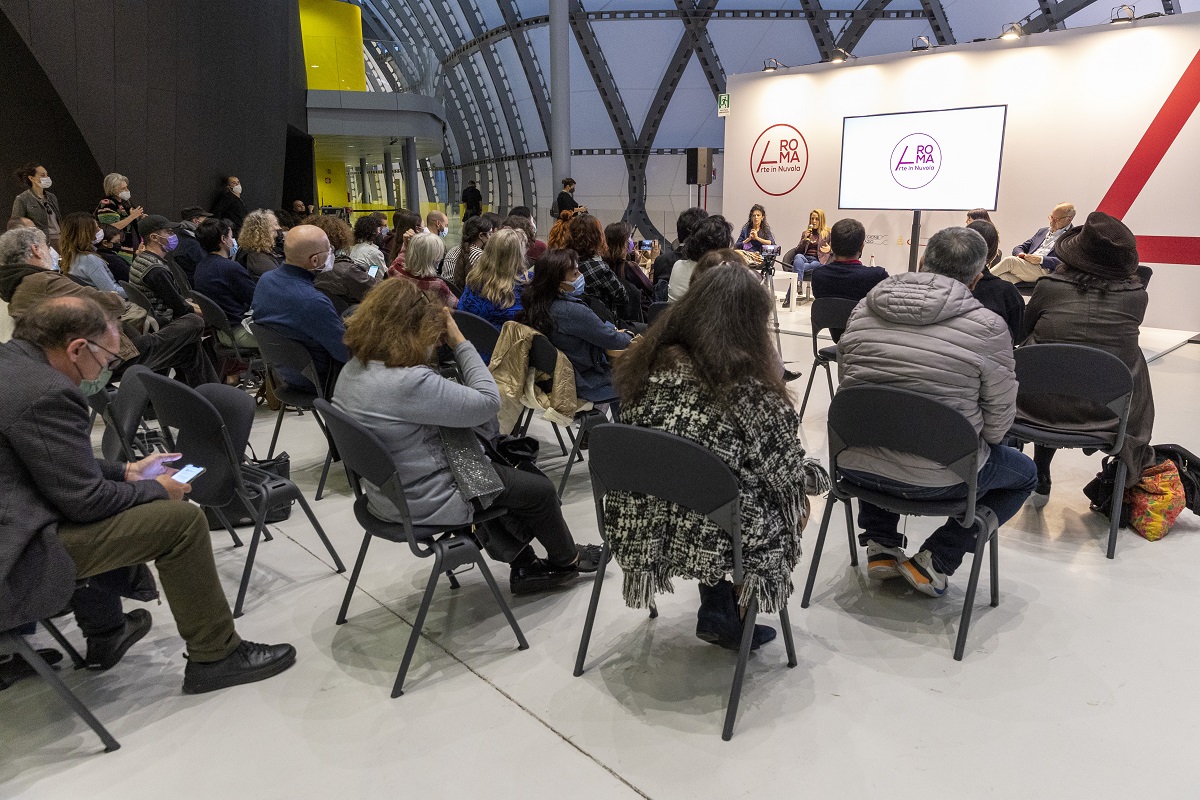
Talk 2021
RETHINKING ROME. AND BEYOND
With the return of an event in the Capital that aims to serve as a bridge between modern and contemporary art, while also showcasing the latest trends in visual art, it is essential to reflect on and discuss Rome’s role in the international art system today and what it could become in the future.
A city with a strong international vocation, Rome has long captivated the imagination of countless artists, making it a must-visit destination in the Grand Tour, both past and present. This enduring appeal is deeply embedded in its DNA, supported by a network of institutions dedicated to nurturing creativity and promoting contemporary art. With its Academies and Foreign Cultural Institutes, uniquely present in such numbers only in Rome, the city maintains a dynamic intellectual exchange with nations near and far, from Japan to the United States, Egypt to Brazil.
Moreover, for much of the second half of the 20th century, Rome was a hotbed of artistic movements and avant-garde currents that revolutionized the way we perceive art today. Consider figures like Jannis Kounellis (a Greek artist who arrived in Rome in 1960) and his legendary installation of twelve live horses at Fabio Sargentini’s Attico gallery. Or the ability of Tano Festa and Franco Angeli to transform Roman symbols into universal Pop Art icons. Fabio Mauri, a pioneer in reinterpreting Italian political history through art. The groundbreaking galleries La Tartaruga, La Salita, and later Galleria Pieroni, which fostered a flourishing avant-garde scene that continues to captivate today.
In more recent years, public art initiatives, efforts to redefine Rome’s suburbs through contemporary art, and the emergence of numerous private foundations have further shaped the city’s cultural profile. Rome’s museums, beyond MAXXI and MACRO, also form a rich constellation of institutions under the Capitoline Superintendency, each contributing to the city’s artistic identity.
Not to mention, Rome is also an imaginary, a city deeply ingrained in our collective consciousness, thanks to fashion and cinema. Through powerful and poetic images, immortal characters, and unforgettable lines, cinema has shaped Rome’s myth. From the epic films shot in Cinecittà Studios to Paolo Sorrentino’s La Grande Bellezza, and the legendary faces of Mastroianni, Sordi, Gassman, and Nanni Moretti, Rome’s image is etched into our perception, allowing everyone to create their own “film” using the elements they find most inspiring in this unique human and cultural landscape.
Given these premises, it is imperative to reassess Rome’s potential as a hub for artistic production, collecting, and an art market open not only to the rest of Italy but also to the Mediterranean, Europe, and beyond.
A series of talks will explore Rome’s identity through its public and private institutions, incorporating an external perspective to better understand how to shape a competitive “Rome system”—something entirely feasible given its rich cultural foundation.
Moreover, a dedicated talk will address the intersection of art and communication, a relationship deeply reshaped by the internet and social media. Another discussion will focus on the legal and tax frameworks surrounding the buying and selling of artworks, equipping collectors with the knowledge and tools necessary to engage in informed and conscious collecting.
